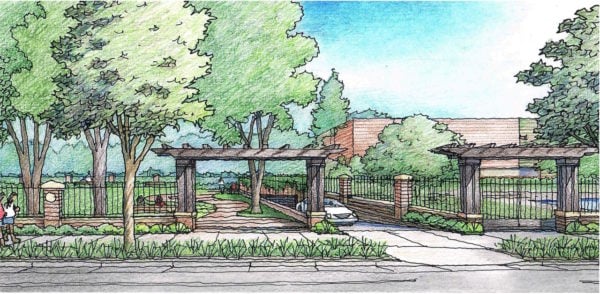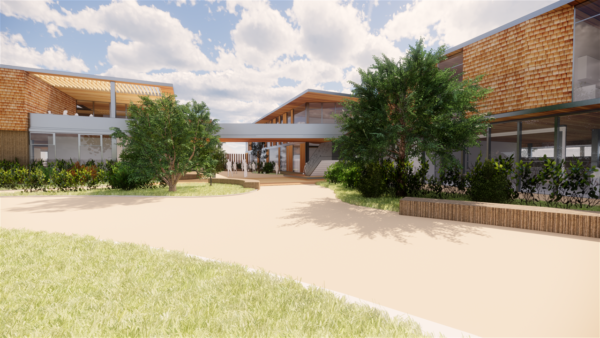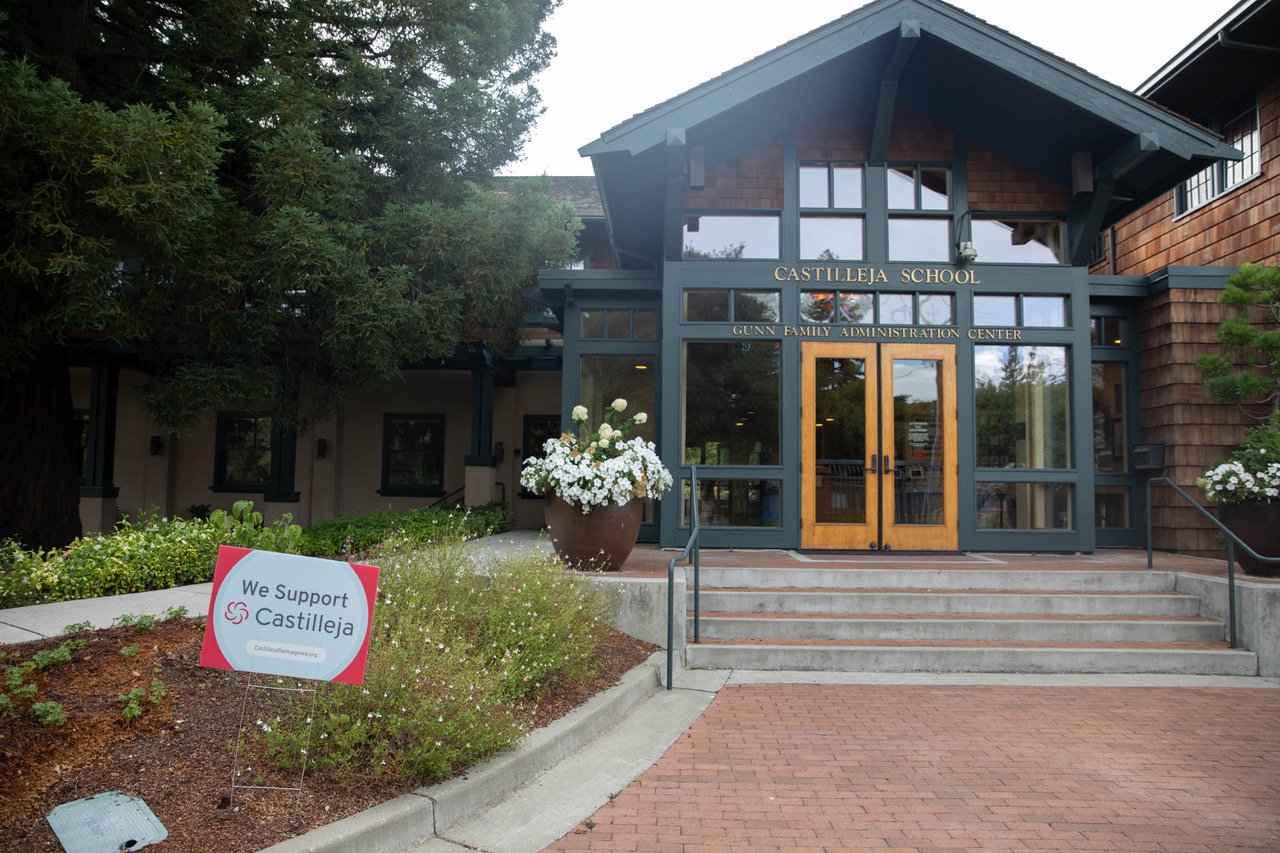Yard signs decorate the front lawns of Palo Alto homes near the private, all-girls Castilleja School. Big red letters on some signs read, “Stop the Castilleja Expansion,” while others read, “Put our kids first.”
For more than three years, Palo Alto residents and school officials have feuded over a plan that Castilleja says would modernize its campus and add new infrastructure while also allowing for higher student enrollment. The school’s proposal has faced community backlash, though, with nearby residents expressing concerns about increased traffic, rising housing costs and the school’s previous violation of city regulation.
“[The proposal] has been super divisive, especially as people are concerned about getting in and out of the area, as the traffic can already get so bad,” said longtime Palo Alto resident Annabella Ma.
Castilleja has been open for more than 100 years and serves sixth-through-12th graders on its Palo Alto campus, which sits on a 6-acre lot and is surrounded by single-family homes.
The school is proposing the addition of 80,000 square feet in buildings and facilities, according to official documents outlining the plan. All redevelopment would occur on Castilleja’s current property. To make room for an underground parking garage and extra classroom space, Castilleja plans to demolish two on-campus buildings owned by the Castilleja School Foundation, a nonprofit that helps promote the vision of the school.

The plan also includes the construction of a new, large campus building to replace three older, smaller buildings. Castilleja hopes to increase enrollment from 434 to 540 students, adding 27 members to the student body each year over the course of four years.
“Gradually increasing our high school [enrollment] over four years would allow us to enrich our academic, athletic and artistic opportunities for young women and girls while supporting the school’s commitment to economic diversity,” wrote Lorraine Brown, Castilleja Director of Communications & Community Relations, in a statement to The Daily. Currently, she noted, more than one in five students at the school receive tuition assistance.
However, Castilleja’s previous breach of city regulation has sowed distrust and conflict within the surrounding community. In 2000, the school was granted a permit defining certain zoning restrictions and capping its enrollment at 415 students. For more than a decade, the school violated the latter restriction, and enrollment climbed to 448 students in 2013. When the city was alerted to this violation by the principal that year, the school was fined $300,000 and ordered to reduce its student body population incrementally over the course of five years. The school has since filed for a new permit.
Maria Hall, who recently moved out of Palo Alto after sending her kids to the city’s local public schools for over five years, said it may take the community some time to heal before it can support the school’s next steps.
“I understand that the school wants what’s best for their kids, but if you’re paying so much to live in an area, you also deserve optimal conditions,” she said. “Allowing [Castilleja] to have over-enrollment for so many years without informing the community was wrong.”
Castilleja officials told The Daily that they have been persistent in their efforts to regain the trust of the community and promote transparency in talks with residents. Since 2012, Castilleja has held more than 50 community meetings to gather input about its modernization plans, and has made changes to its proposal based on those conversations, Brown wrote.

She added that the school’s “aggressive” Traffic Demand Management program — which added three bus routes, offered shuttle service to the Caltrain and established remote employee parking — has reduced peak car trips to campus by 25-30%. The school has also encouraged more biking, walking and carpooling.
Palo Alto conducted and released its Environmental Impact Plan on the school’s proposal in late July, which outlines the project and necessary permits. It lists an increase in traffic and reduced efficiency of transportation as “significant and unavoidable.” Most of the other potential impacts, like inadequate emergency access and exposure to excess noise, are cited as less than significant.
“[Castilleja’s proposal] really isn’t a debate,” wrote Palo Alto City Manager Amy French in an email to The Daily. “It is a planning application allowing a formal request and environmental review document analyzing the project’s potential effects — and potential effects of project alternatives — to be considered and acted upon by the City Council.”
French noted that the city website will include updates to the project.
“It’s nice to have a school [Castilleja] that is so cognizant and receptive to the community and acknowledges their wrongdoings,” said Angelo Mara, a resident who lives near the school. “I still have my concerns though, so it’ll be interesting to see how the process develops going forward.”
Contact Arushi Saxena at arushisx ‘at’ gmail.com.
